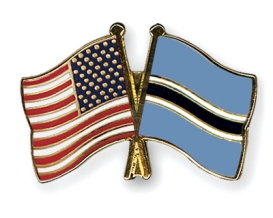Tags
AIDS, ARV, Botswana, Gates Foundation, HIV, Hope, MERCK, my 500 words, PEPFAR
These stories are not uncommon. Just over 10 years ago Botswana faced an epidemic of catastrophic proportion. The response, from the beginning of the epidemic, both by the Botswana government and international donors and research institutions, has been unprecedented.
Besides investing hugely by its own government, Botswana has received aid from international donors and research institutions. The U.S. government was involved through the CDC and PEPFAR, the President’s Emergency Plan for AIDS Relief, which was launched by President George W. Bush. The Bill and Melinda Gates & Merck Foundations have also been a vital part of seeing these statistics improve.
Today, the plight of a Zimbabwean is close to what it was over 15 years ago. It was too late for the teacher mentioned in my previous post. But for the young woman, a citizen of Botswana, who got help almost immediately once the free program was rolled out in the country, it meant life for her. The Southern African nation of Botswana has one of the highest rates of HIV in the world. Nearly 25 percent of all adults in the country are infected with the virus, with the Kingdom of Swaziland ranking number one.
But Botswana is also remarkable for its response to the epidemic. It has one of the most comprehensive and effective HIV treatment programs in Africa. Transmission of HIV from infected mothers to their fetuses and newborn babies went from 40% has now been brought down to just 4%. A decade ago, Botswana was facing a national crisis as AIDS appeared on the verge of decimating the country’s adult population. Now, Botswana provides free, life-saving ARV drugs to citizens who need them.

In 2002, Botswana became the first nation in Africa to launch a program to try to provide access to HIV drug treatment nationwide. Now, roughly 95 percent of Botswana citizens who need the medications are on them and living healthy, productive lives. Botswana has had advantages in addressing HIV that many other countries do not have even though through ongoing infection rates it comes in at the second most affected country from HIV in the world. Through education, both Moral and academically, the statistics are slowly improving. Though as large as the State of Texas or the country of France, its small population of only 2 million people, the effects on such a small population are substantial. The Botswana government now spends more on health care per capita than any other country in Africa.
Having lived in the country for more than 25 years, we have seen a turnaround in the effects of HIV/AIDS on our everyday lives. Funerals were continual, hospital beds were not enough, there was not one area of life here that was not affected by the scourge. Today, things are shaping up. With services offered by Government, with partnerships with NGO’s, with a society that wants to see change, hope is becoming a reality. I for one am grateful for all the efforts made, international and local, to see what was a death sentence for a nation, turn into a thriving nation that is headed towards Vision 2016 and continue to be a Model for all of Africa to see.
Photo: Bing.com
Stats taken from: http://www.npr.org/2012/07/09/156375781/botswanas-stunning-achievement-against-aids
My 500 Words Post 21



Mom I just read all your stories on this page I love them :) I miss home more so now than ever! I probably should have not kept reading but its all so good!!!
Love you so much mum! Keep up the awesome stories!!!
Remick, you helped make these stories! You were the first kid that got to be the guinea pig! I wouldn’t trade you for a troupe of baboons! You almost got to be raised with them in one of my stories!